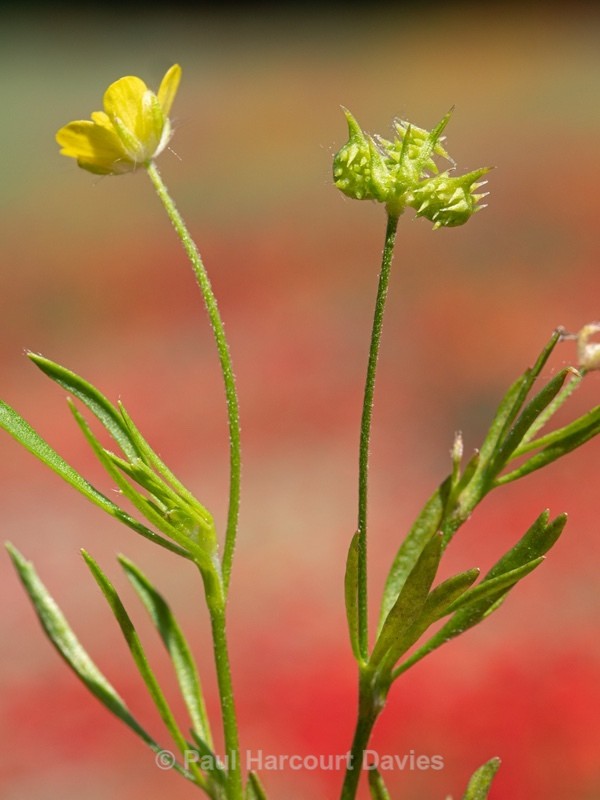
Corn buttercup (Ranunculus arvensis) . A member of the buttercup family (Ranunculaceae) with a pale lemon-yellow hue. The seed heads are the defining characteristic of this species: up to almost a centimetre long, oval and covered in spines up to 2mm in length.
Corn buttercup leaves are stalked and deeply dissected, divided into 3-5 lobes. All parts of the plant are poisonous when fresh, and it also has a strongly acrid juice that can cause skin blistering. It has the potential to be a weed of cornfields. All parts of the plant are poisonous when fresh, and it also has a strongly acrid juice that can cause skin blistering. It has the potential to be a weed of cornfields.
Widespread in Continental Europe where traditional agriculture and mowing regimes are practised - formerly widespread throughout the south and east of England it has declined rapidly over the last 60 years, now with few viable populations. It is classified as ‘Critically Endangered’ and is therefore considered to be facing an extremely high risk of extinction in the wild. nr Norcia, Sibillini, Umbria, Italy, June 2019
Corn buttercup leaves are stalked and deeply dissected, divided into 3-5 lobes. All parts of the plant are poisonous when fresh, and it also has a strongly acrid juice that can cause skin blistering. It has the potential to be a weed of cornfields. All parts of the plant are poisonous when fresh, and it also has a strongly acrid juice that can cause skin blistering. It has the potential to be a weed of cornfields.
Widespread in Continental Europe where traditional agriculture and mowing regimes are practised - formerly widespread throughout the south and east of England it has declined rapidly over the last 60 years, now with few viable populations. It is classified as ‘Critically Endangered’ and is therefore considered to be facing an extremely high risk of extinction in the wild. nr Norcia, Sibillini, Umbria, Italy, June 2019














